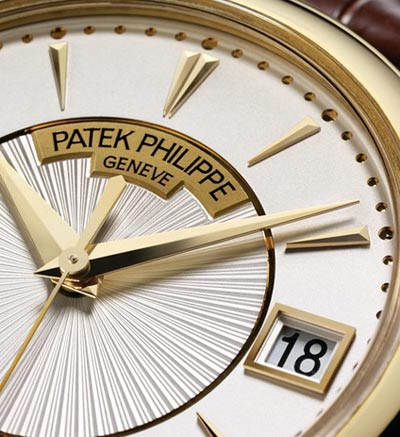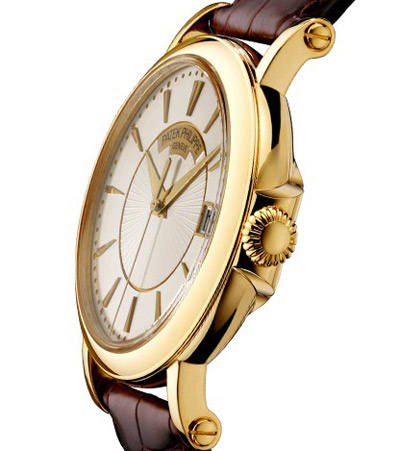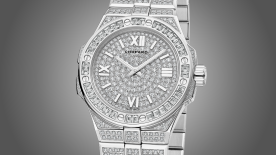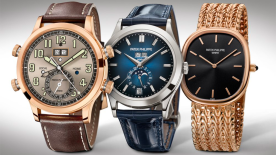Revue FH - 3 September 2009
As in all other officer's wristwatches, one of the key assets of the Ref. 5153 is the case in 18K yellow gold with the hinged cover that protects the case back. It is one of the most elaborate horological constructions that are still being built. From the front, it reveals the classic sleekness of a Calatrava with a mirror-polished, rounded bezel. Only a few modest details suggest that it is an officer's-style case: the straight lugs with the screwed strap bars, the knurled turban-style crown, and the small case extension ridge on the crown side. This element hides the hinge for the cover that protects the screwed case back with the sapphire window. Such details clearly manifest the precision, the care, and the skill with which the manufacture's cases are made.When the cover is closed, only a hairline joint and the small lip suggest that it is indeed hinged. It can be opened with a fingernail at the unobtrusive cover lip. The gap must be exactly the same width along the entire circumference, without even the slightest play. And not least, the same clean and solid click must be heard when the cover is snapped shut. Only the most talented casemakers can adjust the hinge to make the hinged back mate with the case contours to hundredths of a millimeter. Only then will it click shut with the right sound. Apart from perfection in craftsmanship, this work also calls for ample patience. The casemaker and the polisher normally require nearly two days to complete this challenging task.
Connoisseurs will immediately notice that with a diameter of 38 millimeters, the Ref. 5153 is 2.4 millimeters larger than its predecessor, the Ref. 5053. But even with this si-ze, it clearly remains within the proportions of discreet elegance that Patek Philippe considers paramount for the timelessness that characterizes all of the company's watches.
Regardless of the work invested in the case, the face of the watch deserves the utmost attention as well. So, like all of the officer's watches crafted in Geneva, the Calatrava Ref. 5153 features a particularly splendid dial. It is silvery opaline and features a hand-guilloched sunburst pattern in the center, bordering on a small golden cartouche which displays the arched Patek Philippe Genève signature in black. Small gilt minute pearls encircle the periphery of the dial. The hour markers are faceted, arrow-shaped gold appliques. The large date aperture at 3 o'clock has a polished gold frame. Two crisply faceted Dauphine hands track the course of time in hours and minutes on this stage, accompanied by a slender seconds hand that extends to the fringe of the dial and carries a wide counterweight at its shorter end.
The precise motion of these hands is assured by a Patek Philippe self-winding 324 S C manufacture caliber. It is endowed with a unidirectionally winding central rotor in heavy 21K gold. Beating at a frequency of 28,800 semi-oscillations per hour (4 Hz) and thanks to its generous amplitude, the balance wheel guarantees a regular rate in the range between -3 and +2 seconds per day, a specification that applies to all of Patek Philippe's mechanical movements. And just like its peers, the 324 S C is a stunning beauty that will mesmerize every watch lover with its beveled steel parts, Geneva striping on bridges and cocks, circular graining, engraved gold rotor, and many other highlights. When the hinged back is open, the movement can be admired though the screwed case back with the sapphire window.
| At Patek Philippe, officer's watches are a venerable tradition. No wonder, because Count Antoine Norbert de Patek, the founder of the manufacture, was a former Polish officer who had to leave his native country after the failed uprising in the 1830s and subsequently found exile in Geneva. The design of the so-called officer's watch was born when small pocket watches with hinged backs were converted into handy wristwatches during World War I. Since then, Patek Philippe has repeatedly used this case form for timepieces with a distinctively historic connotation. |
|---|






